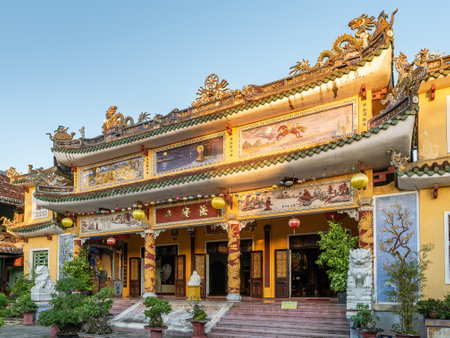Introduction to Feng Shui and the Bagua Map
Feng Shui, a time-honoured Chinese practice, has steadily gained popularity across the globe, offering a holistic approach to creating harmonious living spaces. At its heart, Feng Shui is about balancing the flow of energy, or qi, within our environments to enhance wellbeing, prosperity, and happiness. The Bagua map is one of the most essential tools in this tradition—a conceptual energy map superimposed onto a home’s floor plan to help identify which areas correspond to different aspects of life such as wealth, relationships, and health. For British homes, whether they are charming Victorian terraces or sleek contemporary apartments, understanding the fundamentals of Feng Shui and how the Bagua map operates offers an exciting opportunity to reimagine familiar spaces with renewed vitality. Applying these principles thoughtfully acknowledges both the unique character of British period architecture and the modern lifestyle, setting the stage for adaptations that celebrate tradition while fostering positive energy flow.
Understanding British Period and Contemporary House Layouts
To effectively adapt Feng Shui Bagua tools to British homes, it is essential first to appreciate the unique architectural features and spatial organisation that distinguish both period and contemporary residences in the UK. The evolution of British domestic architecture has resulted in diverse layouts, each reflecting its era’s cultural values, societal needs, and local climate. Below, we explore the defining characteristics of these two broad categories.
Architectural Features of British Period Homes
Period properties—ranging from Georgian, Victorian, to Edwardian eras—are celebrated for their craftsmanship, proportions, and ornate details. These homes often have:
- High ceilings and sash windows, maximising daylight even in narrow streets.
- Fireplaces as focal points in principal rooms.
- Defined rooms, with clear separation between public (reception rooms) and private (bedrooms) spaces.
- Corridors and hallways, sometimes long and narrow, guiding movement through the home.
- Bay windows, especially in Victorian terraces, enhancing both external façade and internal space.
Cultural Context of Period Homes
The layout reflects social hierarchies of the time: formal front parlours for entertaining guests, servant quarters tucked away, and kitchens placed at the rear. The spatial division echoes a respect for privacy and tradition prevalent in historical British society.
Features of Contemporary British Houses
Modern homes—from post-war semis to new-build flats—prioritise function, openness, and efficiency. Hallmarks include:
- Open-plan living areas, blending kitchen, dining, and lounge spaces for sociability and light flow.
- Larger windows or patio doors, fostering indoor-outdoor connections.
- Simplified room shapes, with fewer corridors or compartmentalised zones.
- Sustainable materials and energy-efficient layouts, responding to modern environmental values.
Cultural Context of Contemporary Homes
The shift towards open-plan design mirrors evolving lifestyles—more informal socialising, blended work-life routines, and a desire for flexible spaces that can adapt over time. There is also an increasing emphasis on maximising natural light and garden access due to the importance of outdoor living in British culture.
Comparative Overview: Period vs Contemporary Layouts
| British Period Homes | Contemporary Homes | |
|---|---|---|
| Main Spatial Organisation | Compartmentalised rooms; formal divisions; corridors/hallways prominent | Open-plan living; integrated spaces; minimal corridors |
| Cultural Emphasis | Privacy, hierarchy, tradition | Sociability, flexibility, light/wellbeing |
| Architectural Details | Sash/bay windows, fireplaces, ornate cornices/mouldings | Large windows/patio doors, minimal ornamentation, sustainable features |
| Main Room Placement | Kitchens at rear; parlours at front; servant spaces separate | Kitchens often central/open to main space; bedrooms grouped together; home offices common |
Navigating Spatial Contrasts for Feng Shui Adaptation
The contrast between structured period homes and fluid contemporary layouts presents both challenges and opportunities when applying Feng Shui principles. Understanding these differences enables more thoughtful use of Bagua mapping—ensuring that energy flows harmoniously within each unique British context while respecting cultural identity and spatial logic.
![]()
3. Bridging Eastern Philosophy with British Design
Integrating Feng Shui’s spatial wisdom into the fabric of British period and contemporary homes is a nuanced art, balancing centuries-old Eastern philosophies with the rich heritage of British architecture and design. At its heart, Feng Shui encourages harmonious energy flow—chi—through considered placement and orientation of spaces, elements, and materials. When thoughtfully applied to British contexts, this philosophy can breathe new vitality into both stately Victorian terraces and modern minimalist flats.
Respecting Historical Character
British period houses often feature intricate mouldings, high ceilings, sash windows, and fireplaces as central focal points. Rather than disrupting these cherished features, Feng Shui’s spatial logic invites us to work with them. For example, maintaining clear sightlines from entryways or keeping the hearth uncluttered aligns with Bagua principles for welcoming prosperity and warmth. The intentional arrangement of furniture allows traditional bay windows to serve as natural light sources that support positive energy flow while preserving the historic charm.
Materials in Conversation
The tactile richness of British interiors—oak floors, woollen textiles, ironwork—echoes key Feng Shui elements such as wood, earth, and metal. By thoughtfully selecting finishes that both honour local craftsmanship and complete the Bagua map, designers can create interiors that are not only beautiful but also energetically balanced. For instance, a classic Cotswold stone wall may represent earth energy in the Bagua’s health zone; meanwhile, brass fixtures or copper pots enliven wealth areas with metallic sheen.
Lifestyle Adaptations
British customs—afternoon tea rituals, muddy boots by the door, reading nooks by the fire—are woven into daily life and deserve a place within Feng Shui-informed layouts. Entryways can be kept tidy yet inviting to encourage good chi; living rooms arranged to foster both social connection and solitary retreat reflect both Bagua harmony and British sensibilities. Even in compact urban flats, clever zoning using bookshelves or screens can define Bagua areas without sacrificing the open-plan feel prized in contemporary living.
Through this thoughtful blending of East and West, Feng Shui becomes more than an overlay: it is a dialogue between cultures that enhances wellbeing while celebrating the unique personality of British homes—historic or modern.
4. Practical Application: Aligning the Bagua with British Homes
Adapting the Feng Shui Bagua map to British period and contemporary homes requires thoughtful consideration of local architectural nuances. British houses, whether Victorian terraces, Edwardian semis, or modern flats, frequently feature unique floor plans and entrance placements distinct from those found in traditional Chinese dwellings. To achieve harmony and flow, it’s vital to approach Bagua mapping with sensitivity to these structural differences.
Understanding British Home Layouts
Typical British homes may have:
- Narrow entrance halls or vestibules
- Multiple storeys with winding staircases
- Irregular room shapes due to bay windows or extensions
- Main doors not always positioned centrally
These characteristics can make direct Bagua overlay challenging. Instead, a flexible and intuitive approach is recommended, respecting both the spirit of Feng Shui and the character of the home.
Step-by-Step Guidance for Mapping the Bagua
- Identify Your Main Entrance: The main entryway acts as your homes “mouth of qi.” In British homes, this could be at the front, side, or even through a shared hallway in flats.
- Select Your Mapping Method: Choose between the front door method (aligning the bottom of the Bagua with your main entrance wall) or the compass method (using a compass to determine true north). For most UK homes, the front door method offers simplicity and clarity.
- Overlay the Bagua Grid: Place the nine-square grid over your entire ground floor plan. For irregular layouts—such as L-shapes or split-levels—extend the grid to include missing or protruding areas as ‘virtual’ spaces to ensure all guas are accounted for.
- Address Unique Features:
| British Layout Feature | Bagua Adaptation Tip |
|---|---|
| Narrow Hallways | Add mirrors or lighting to encourage energy flow and define gua boundaries. |
| Bays & Alcoves | Treat as extensions; enhance corresponding gua with appropriate colours or objects. |
| Multi-Storey Stairs | Apply Bagua to each level individually; focus on main living areas first. |
| Main Door Off-Centre | Align Bagua from point of primary daily entry for practical effectiveness. |
| Mismatched Rooms & Functions | If a kitchen falls into an area meant for wealth, introduce elements (like green plants) that support both functions harmoniously. |
Avoiding Common Pitfalls in British Homes
- Crammed Entryways: Keep these clear to prevent blocked energy flow.
- Understairs Cupboards: Avoid using these for clutter storage if they fall within significant guas such as career or family zones.
- Lack of Natural Light: Use light colours and reflective surfaces in dim corners highlighted by the Bagua map.
The Value of Intuitive Adjustments
No two British homes are alike; therefore, allow for fluidity when mapping the Bagua. If a room straddles multiple guas, blend enhancements mindfully. The aim is not rigid perfection but a harmonious sense of space that supports wellbeing in everyday life.
5. Case Studies: Examples from British Homes
To fully appreciate the potential of integrating Feng Shui Bagua tools into British homes, it is instructive to explore a range of real and hypothetical case studies. These examples highlight how both period and contemporary properties can be respectfully enhanced, harmonising Eastern spatial philosophy with quintessentially British architectural elements.
Victorian Terrace in London: Balancing Heritage and Energy Flow
Consider a classic Victorian terrace in North London, complete with bay windows, ornate cornicing, and narrow hallways. The challenge here lies in preserving original features while activating the Bagua’s zones for optimal wellbeing. By mapping the Bagua over the ground floor, the homeowner identified that the wealth corner aligned with a seldom-used side room. Through subtle interventions—such as introducing wooden elements, soft gold accents, and healthy plants—this space was invigorated without compromising its historic character. Meanwhile, mirrors were tactically placed to draw natural light deeper into the hallway, enhancing the overall energy flow without clashing with heritage aesthetics.
Georgian Townhouse in Bath: Integrating Tradition and Tranquillity
In a stately Georgian townhouse set along Bath’s elegant crescents, high ceilings and symmetrical proportions lend themselves well to Bagua alignment. Here, the health sector intersected with the central staircase—a common scenario in period homes. The solution involved grounding this central axis with an antique runner in earthy tones and introducing artwork symbolising balance. The homeowner curated each room according to its Bagua sector; for instance, family photographs were displayed in the east-facing living room (family/health), while subtle water features adorned the north sector (career/life path), seamlessly marrying Georgian elegance with Feng Shui intent.
Contemporary New-Build in Manchester: Open-Plan Adaptation
Turning to modern architecture, a newly built open-plan home in Manchester presented a different set of opportunities and challenges. With fewer internal walls and expansive glazing, defining Bagua sectors required creative zoning through furniture placement, rugs, and lighting variations. For example, the relationship zone at the rear of the property was delineated by a pair of matching armchairs and soft pink cushions, encouraging connection within an otherwise minimalistic environment. Meanwhile, smart storage solutions kept clutter at bay—an essential principle of both Feng Shui and contemporary design—ensuring energy could circulate freely throughout the social spaces.
Cottage in the Cotswolds: Embracing Cosiness and Connection
A hypothetical example takes us to a quaint stone cottage nestled in the Cotswolds countryside. Thick walls and small windows initially posed limitations for light flow and energetic movement. By aligning interior pathways with Bagua guidelines—such as placing mirrors opposite windows to amplify daylight and strategically positioning natural materials like wool throws or oak furnishings—the cottage’s inherent warmth was enhanced rather than altered. The abundance corner was transformed into a reading nook flooded with gentle afternoon sun, fostering gratitude and prosperity within a compact footprint.
Lessons from Practice
These case studies demonstrate that whether working with intricate period details or streamlined modern layouts, adapting Feng Shui Bagua tools is not about imposing foreign templates but about thoughtful interpretation. British homes—rich with history or bold in innovation—can benefit from these subtle yet impactful adaptations, leading to environments that feel intuitively balanced and deeply personal.
6. Common Challenges and Local Adaptations
When integrating Feng Shui Bagua tools into the diverse architectural tapestry of British period and contemporary houses, several unique challenges arise. The fusion of Eastern philosophies with Western-built environments often requires a creative and culturally respectful approach to overcome these obstacles.
Irregular Floor Plans and Architectural Features
Many British homes, particularly those from the Victorian or Edwardian eras, boast intricate layouts with bay windows, alcoves, or oddly-shaped rooms. Unlike the symmetry favoured in traditional Feng Shui practice, these irregularities can make it difficult to overlay a classic Bagua map. For example, L-shaped floor plans or split levels may not align neatly with the nine grid sections of the Bagua. In these instances, rather than force-fitting the template, consider using the main entrance as your reference point and adapt the Bagua by extending or compressing its areas to fit organically within each room’s boundaries.
Historic Preservation Restrictions
Listed properties and conservation areas often come with strict regulations regarding alterations. Homeowners may be unable to remove walls, change window placements, or alter original features that conflict with optimal energy flow according to Feng Shui principles. To work within these constraints, embrace subtle interventions: introduce mirrors to redirect light and energy where structural changes are impossible, use colour zoning for Bagua enhancements, or deploy symbolic décor like art or plants to reinforce specific energies without infringing on historical integrity.
Cultural Sensitivities and Modern Living
The British home is layered with traditions—afternoon tea nooks, fireplaces as focal points, and cherished heirlooms—all of which play vital roles in daily life. Rather than displacing these elements for strict adherence to Feng Shui rules, blend them thoughtfully into your scheme. For instance, a family photo wall in the ‘Family & Health’ zone (Zhen) can be both a cultural anchor and an energetic enhancer. Similarly, positioning a treasured armchair by the window in the ‘Wealth’ area (Xun) invites prosperity while honouring personal comfort.
Practical Adaptations for Contemporary Homes
New-builds and modern flats across the UK frequently feature open-plan living spaces that challenge traditional room-by-room Bagua mapping. Address this by defining functional zones with rugs, lighting changes, or shelving units—each corresponding to a Bagua area. Subtle shifts in paint hues or decorative accents can further delineate intentions for health, abundance, or relationships without interrupting the flow of contemporary design.
Honouring Both Heritage and Harmony
Ultimately, adapting Feng Shui Bagua tools for British homes is less about rigid application and more about sensitive interpretation. By respecting architectural quirks and local customs—while thoughtfully layering in intention—you create spaces that are both culturally resonant and energetically balanced.
7. Conclusion and Further Resources
Adapting the ancient wisdom of Feng Shui and its Bagua mapping system to British period and contemporary homes reveals a rich interplay between heritage architecture and holistic spatial harmony. Through exploring how to sensitively apply Bagua principles within the unique layouts, proportions, and materials of British houses—whether Victorian terraces, Edwardian semis, or modern new builds—we find that Feng Shui is not a rigid formula but a creative process responsive to local context. Key insights include the importance of reading the existing architectural flow, working with the orientation of rooms rather than forcing alignments, and using local materials and design elements to support positive energy. Next steps for those interested in integrating these ideas may include conducting a personal home assessment, consulting with UK-based Feng Shui practitioners familiar with British architectural styles, or joining local workshops. For further learning, consider resources such as The Feng Shui Society UK, attending talks at design events like Grand Designs Live, or exploring books by UK authors who blend Eastern philosophy with Western interiors. With thoughtful adaptation and ongoing curiosity, creating a harmonious home environment rooted in both tradition and local character becomes an accessible and rewarding journey.


